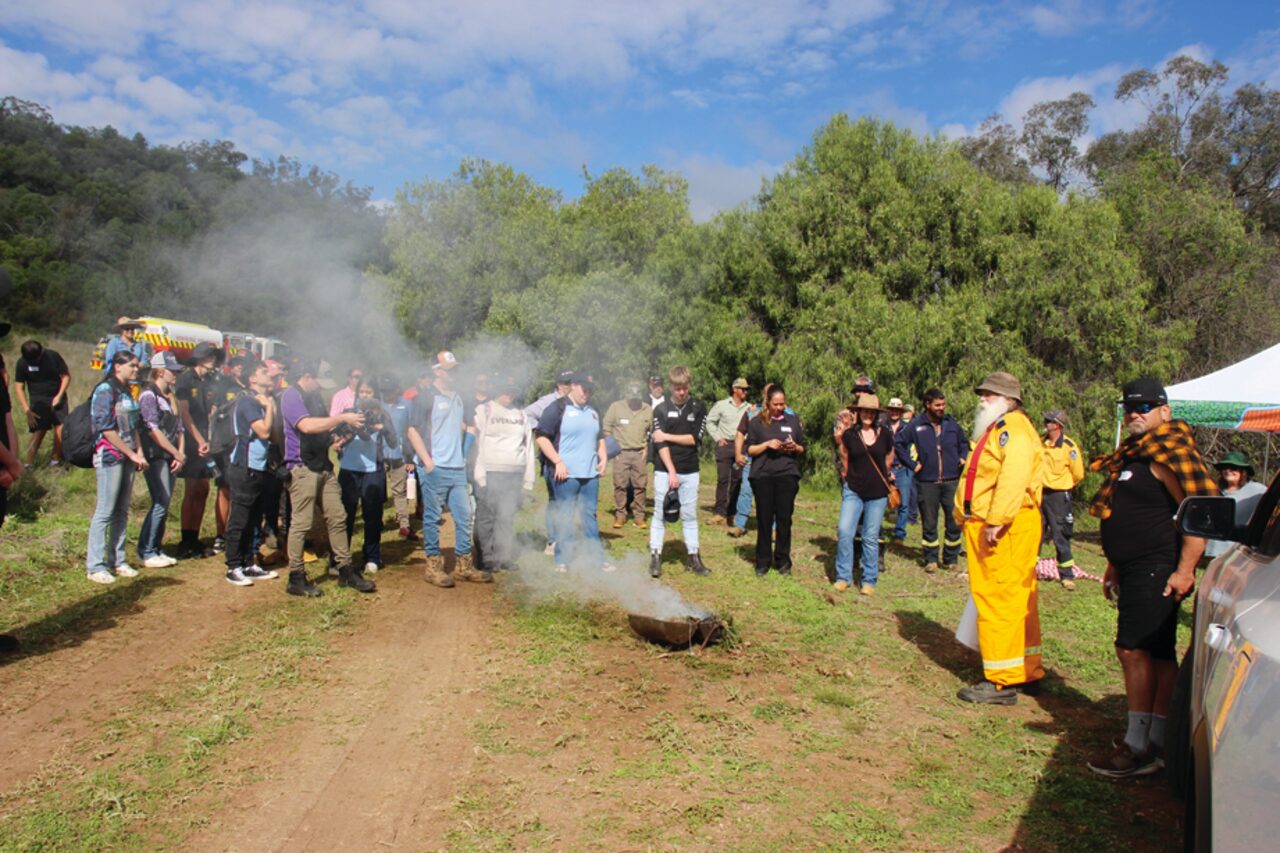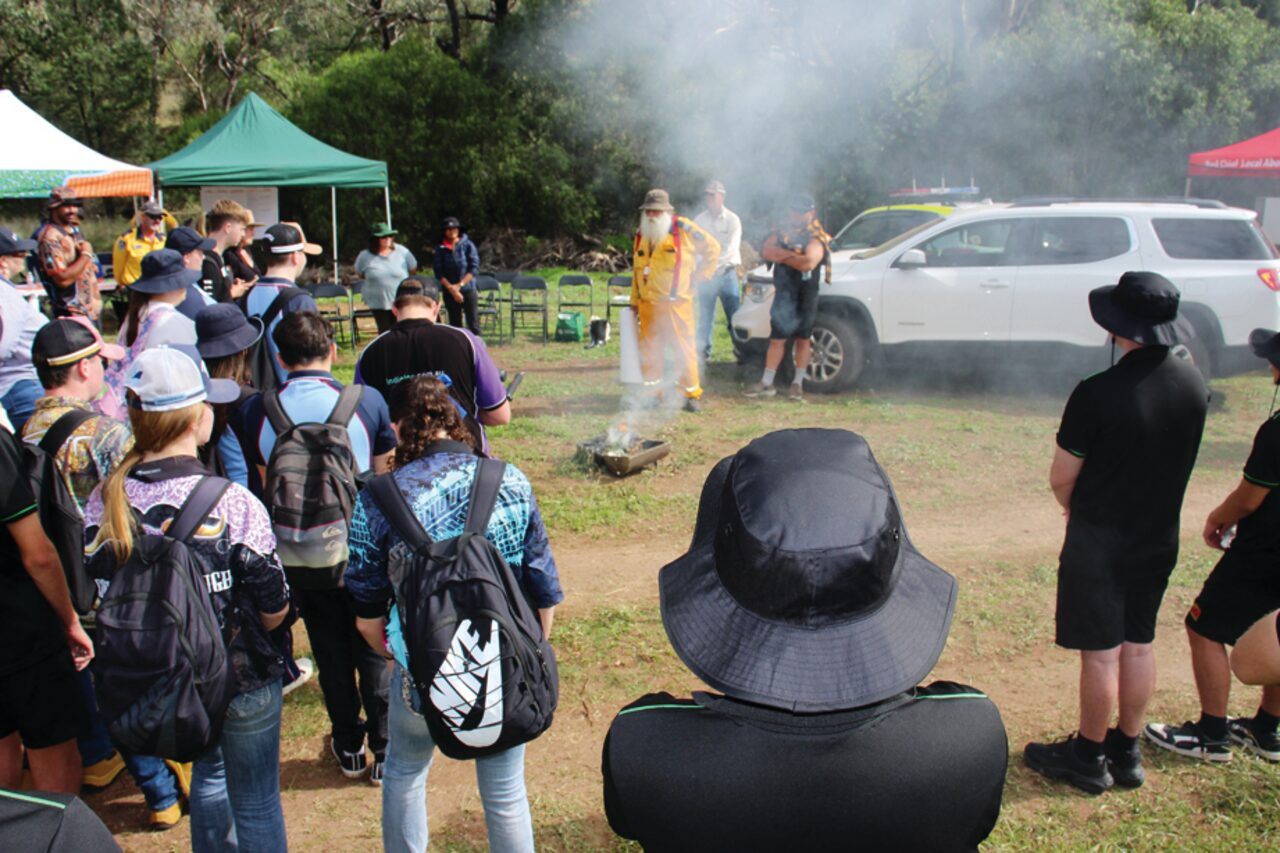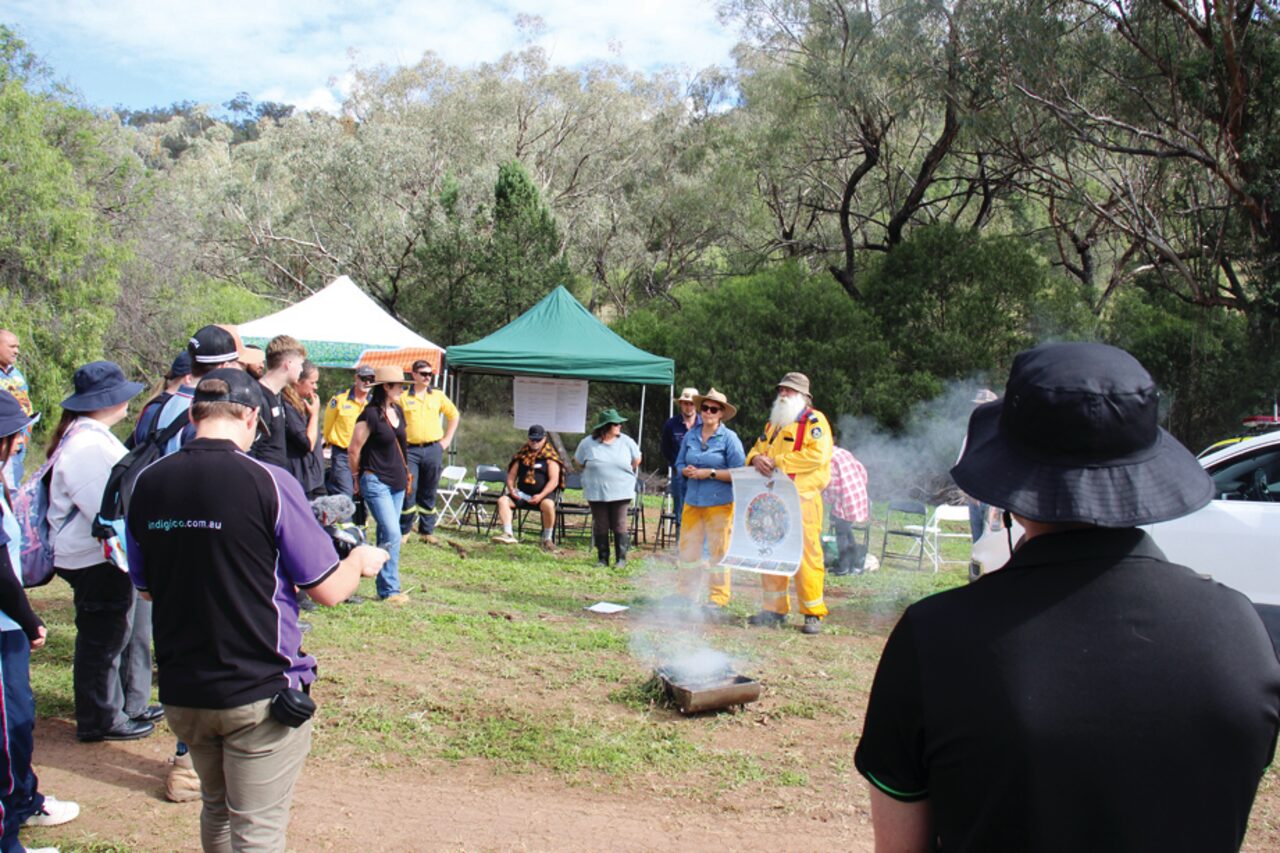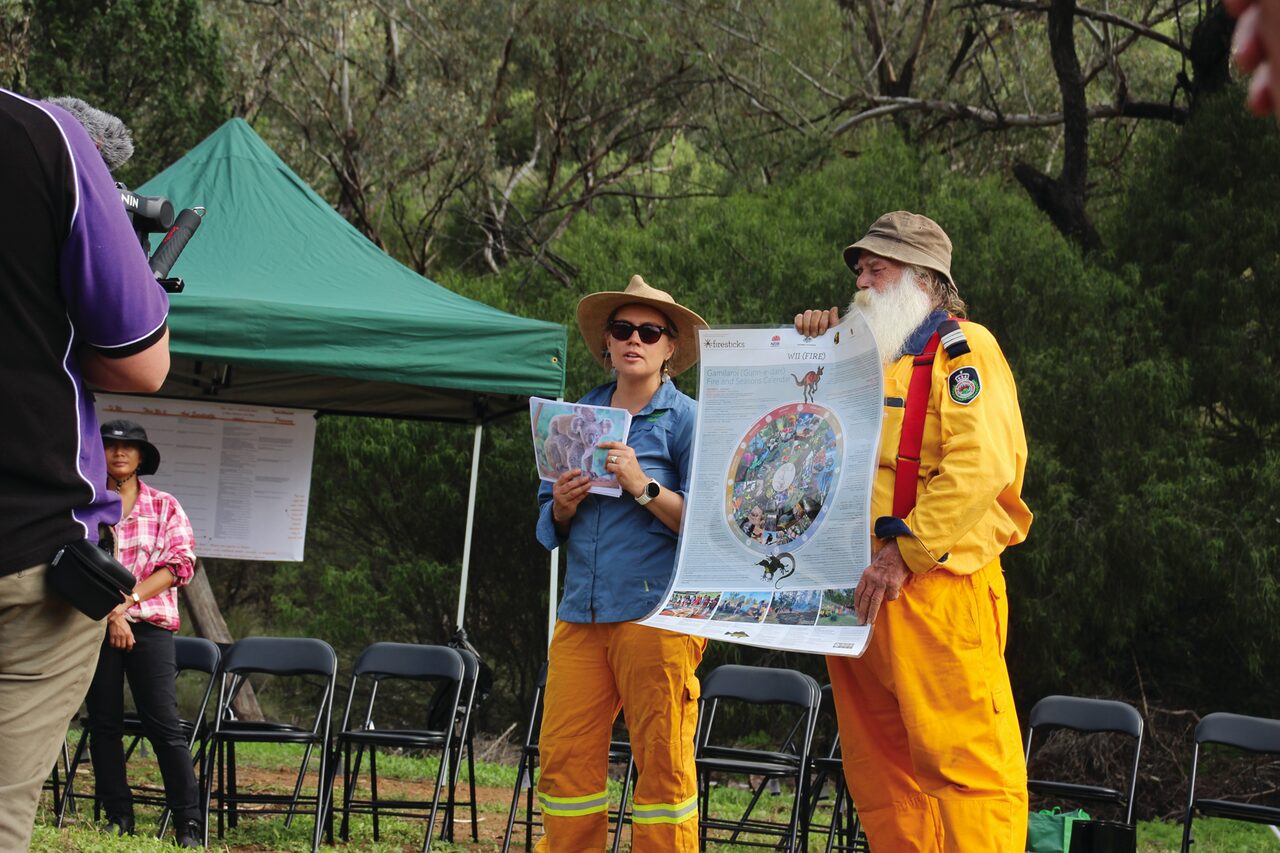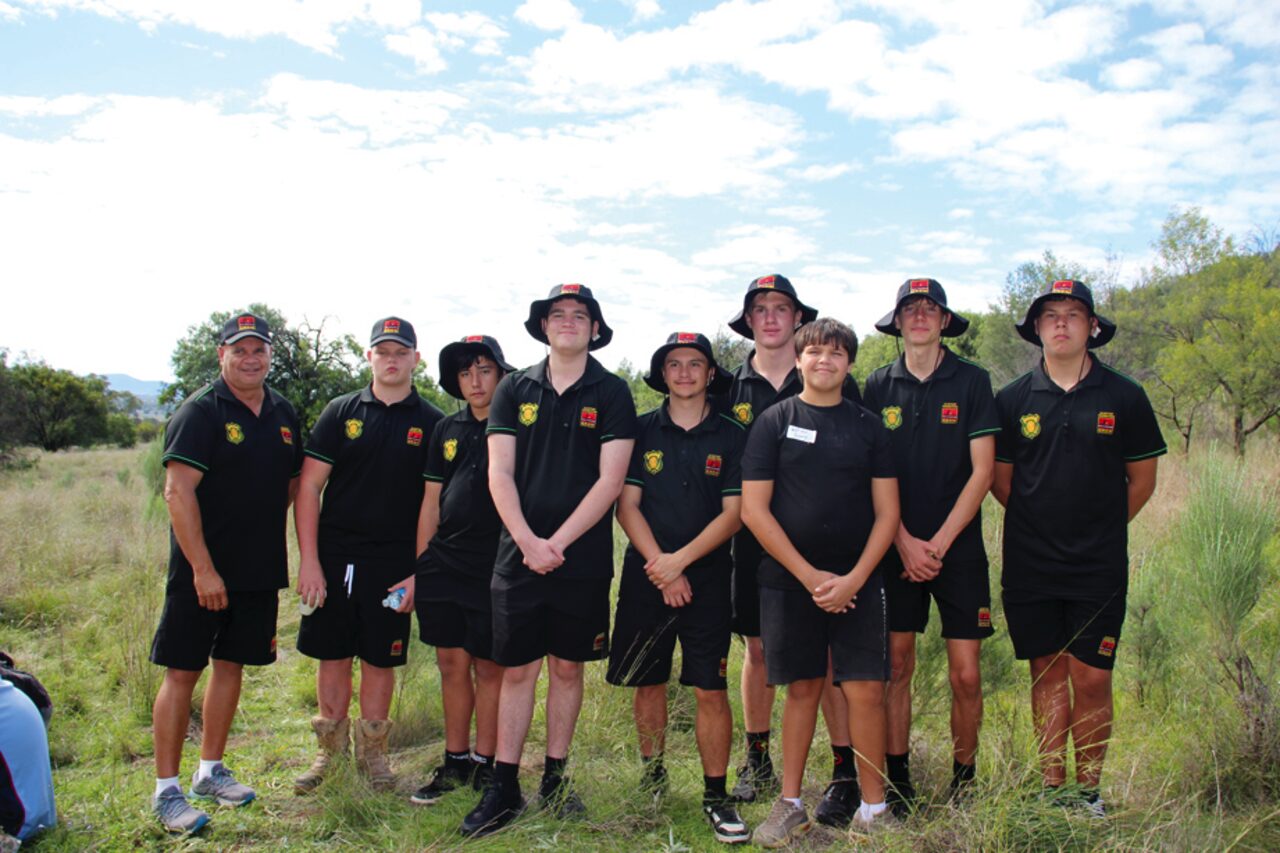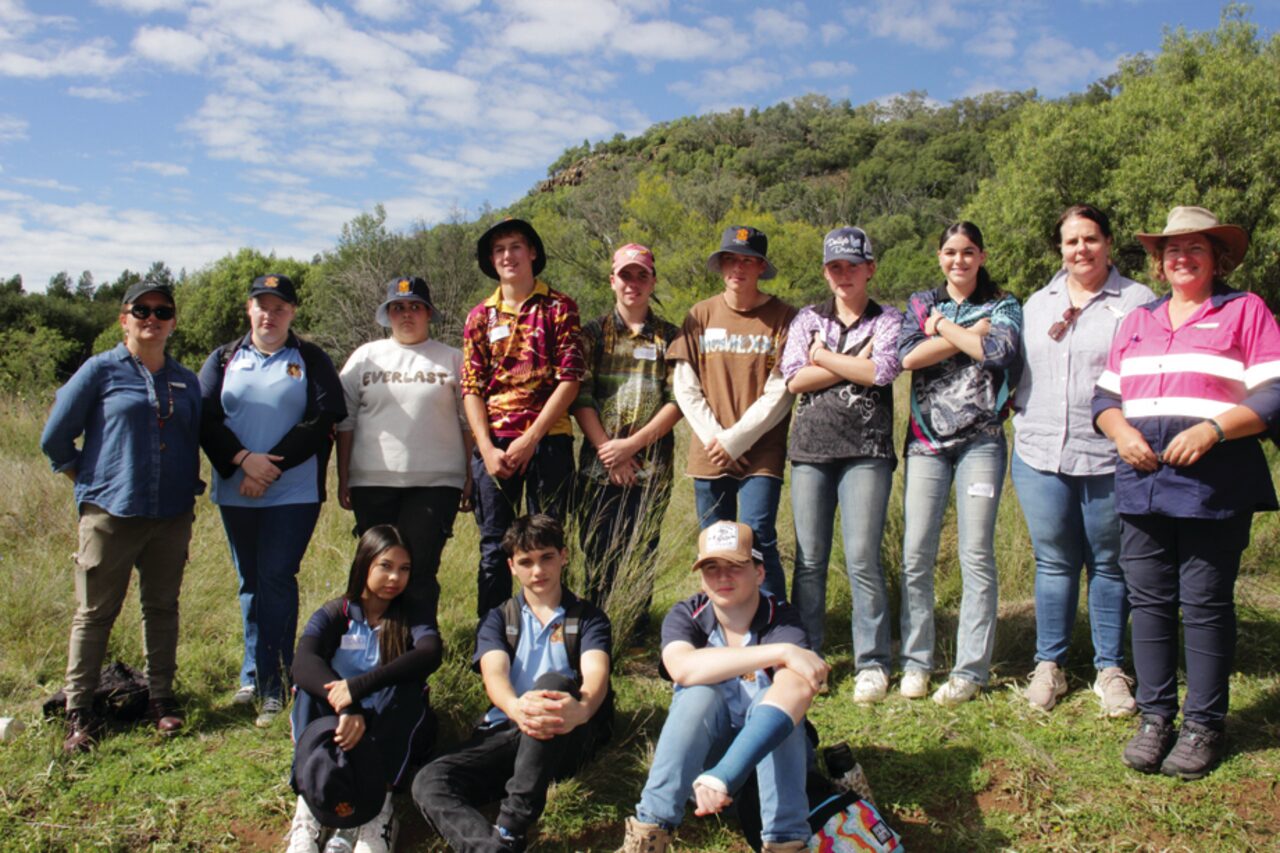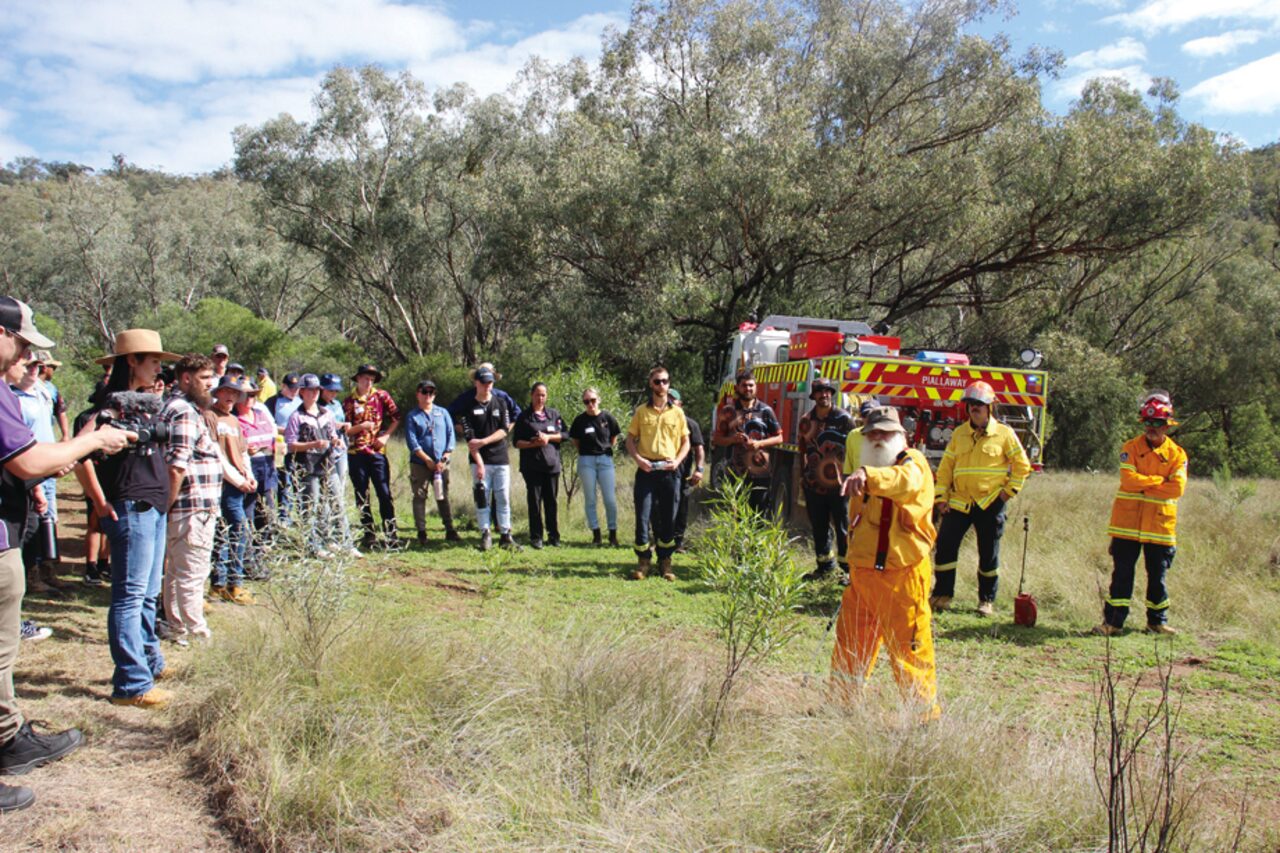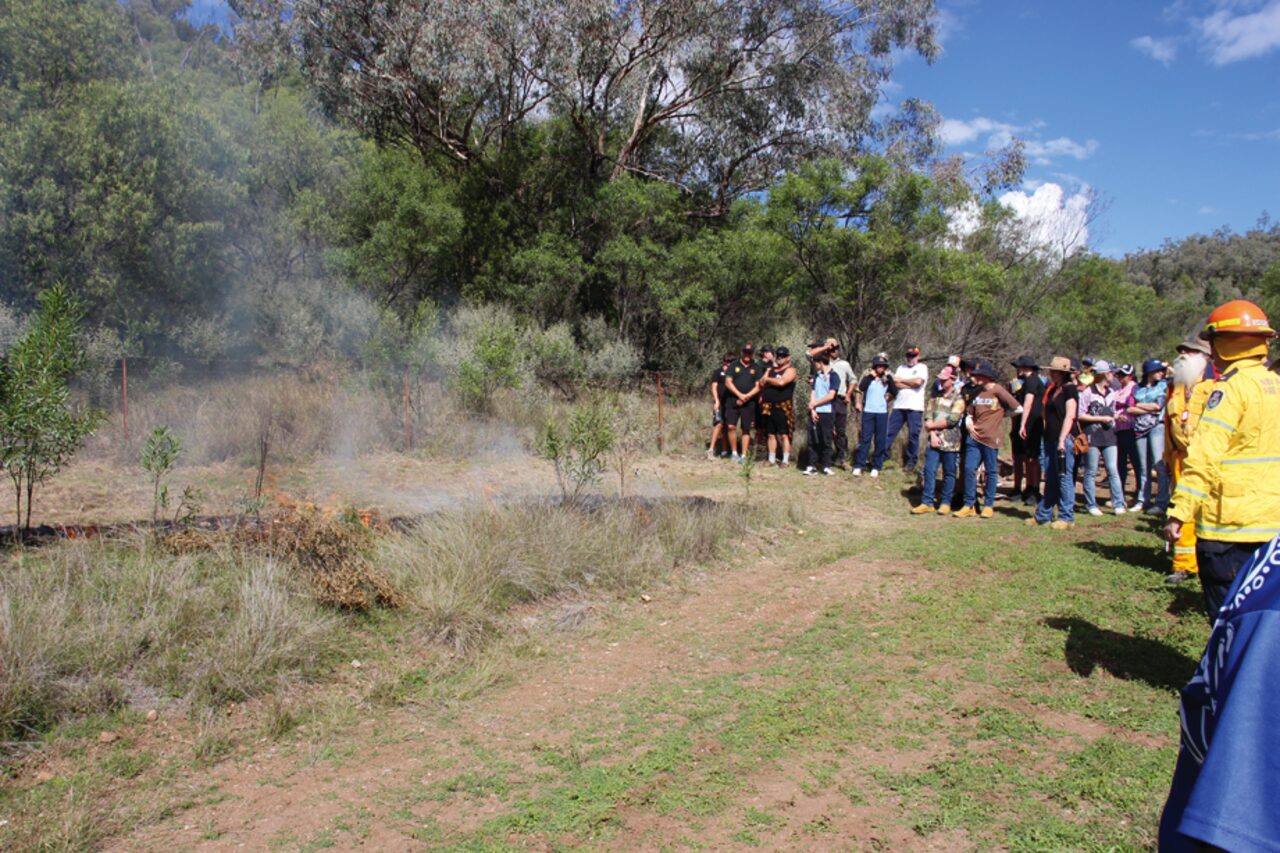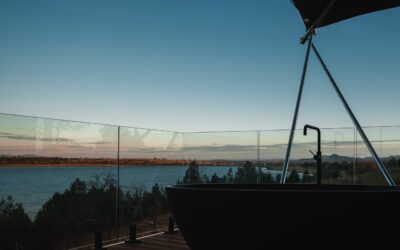An indigenous-led, ‘cultural burn’ south of Gunnedah is helping to ensure survival of a critically-endangered native vegetation.
The activity also helped the Gunnedah community better understand why cultural burns are undertaken by indigenous people and the effect of fire on the environment.
School students, community members and others witnessed this cultural burn demonstration at Gunnedah Resource Centre (Soil Conservation Service) last Tuesday.
The Australian government-supported event was held in partnership with the Local Land Service and Red Chief Local Aboriginal Land Council.
The site is considered culturally significant, particularly for the nearby presence of Red Chief cave and Porcupine Lookout – two areas of importance for the indigenous community.
The area is also of immense ecological importance for the presence of the critically-endangered, box gum grassy woodland.
So threatened is the species, only five per cent of the vegetation remains, mostly on private property.
Cultural burn consultant Michelle McKemey has canvased 28 sites where the vegetation is present and spoken to Aboriginal communities across the North West about cultural burning.
This dialogue helped inform the best sites where a cultural burn could help improve the ecosystem but cautioned how it was important to balance the benefits of fire against the long term risk to natural environment.
“The box gum grassy woodland depends on fire to regenerate the species but too frequent fire is also a threat and can take out key habitat value such as logs, leaf litter and all the things that the animals need to survive,” she said.
It was a sentiment also held by Senior Land Services officer, Angela Baker, who said unburnt areas are just as important for biodiversity as burnt areas.
She said fire can be quite damaging if it’s carried out in the wrong place or time. Ms Baker also said particular care should be heeded around endangered ecological communities and habitat for threatened fauna.
Indigenous elder and Rural Fire Service volunteer Mitchum Neave helped lead last week’s cultural burn near Gunnedah.”They called it a cool burn but it’s actually a cultural burn,” he said between shifts monitoring the fire.”
“It’s really important we maintain this.”
Mr Neave said the intention was for the fire to create a “mosaic” pattern on the land and allowed to run its natural course without reignition.
“If the fire goes out, it goes out,” he said.
Light-heartedly self-described as a “fire practitioner”, Mr Neave was impressed by the 60 people in attendance, all eager to learn more about the cultural burn process.
“I hope the kids take something away from this,” he said.
A group of Gunnedah High School students also representing the Clontarf Foundation, were among those attending the cultural burn.
The foundation provides mentoring support for indigenous boys and young men to improve their education, discipline, life skills, self-esteem, and employment prospects.
It was the first time the Gunnedah contingent had attended a cultural burn but all were eager to learn more in the future.
More than 100 students from year 7-12 are involved with the Clontarf program at Gunnedah High.
Fire calendars
The month of May is considered one of the best times to burn in the Gunnedah region according to indigenous knowledge.
This is because the climate is mostly dry and the landscape is starting to cool down.
Helping inform this cultural burn process are fire season calendars.
Cultural burn consultant Michelle McKemey said these calendars are unique to each indigenous area and have been developed collaboratively with Aboriginal communities across Australia.
“Every community is proud of their fire season calendar,” she said.
“It’s a tool they engage with the wider community be it schools or landcare groups or neighbours … a tool to explain this what [cultural burns] are about, the cultural values, why we’re doing it and what we’re trying to protect.”
Gamilaroi Fire and Seasons Calendars: The Gamilaroi calendars were developed through a series of workshops which were designed to strengthen traditional fire and land management, providing a practical introduction and foundational tools in fire and land management to three Gamilaroi communities – Tamworth, Walhallow and Gunnedah.
The project revitalised traditional Aboriginal fire knowledge; increased understanding of local landscapes, flora and fauna and how these interact with cultural burning; and increased understanding of different types of cultural burns. This was achieved by holding three Indigenous-led workshops incorporating cultural burning education and on-site demonstrations on different areas of land at each of the three communities and developing a fire and seasons calendar for each community.